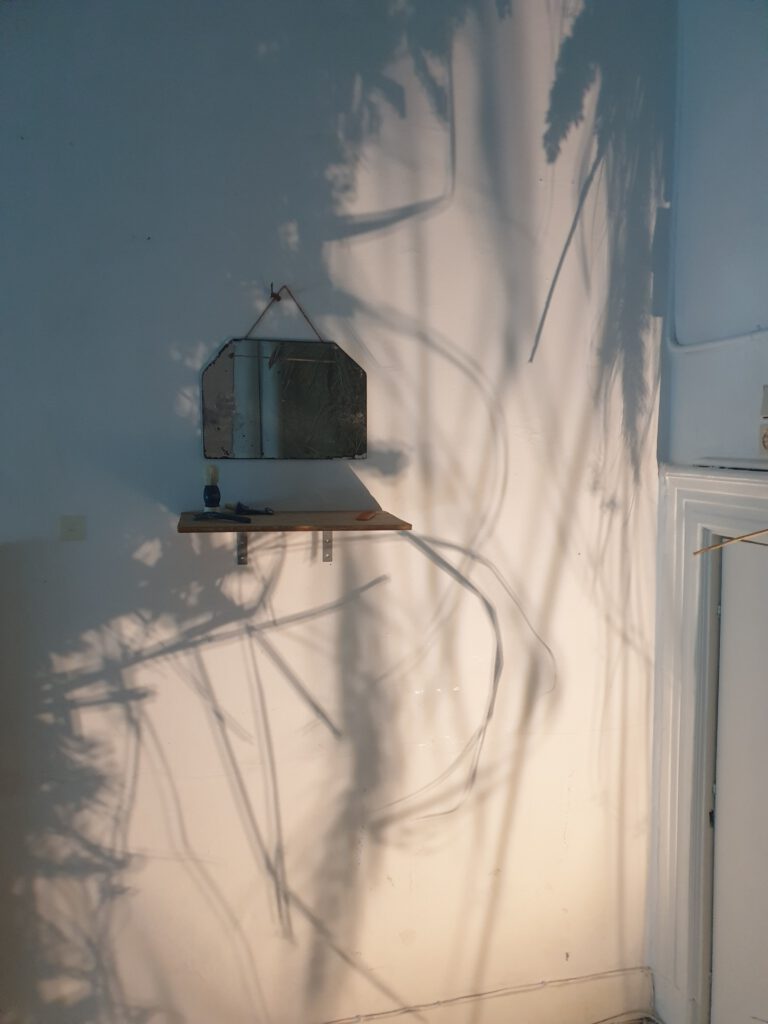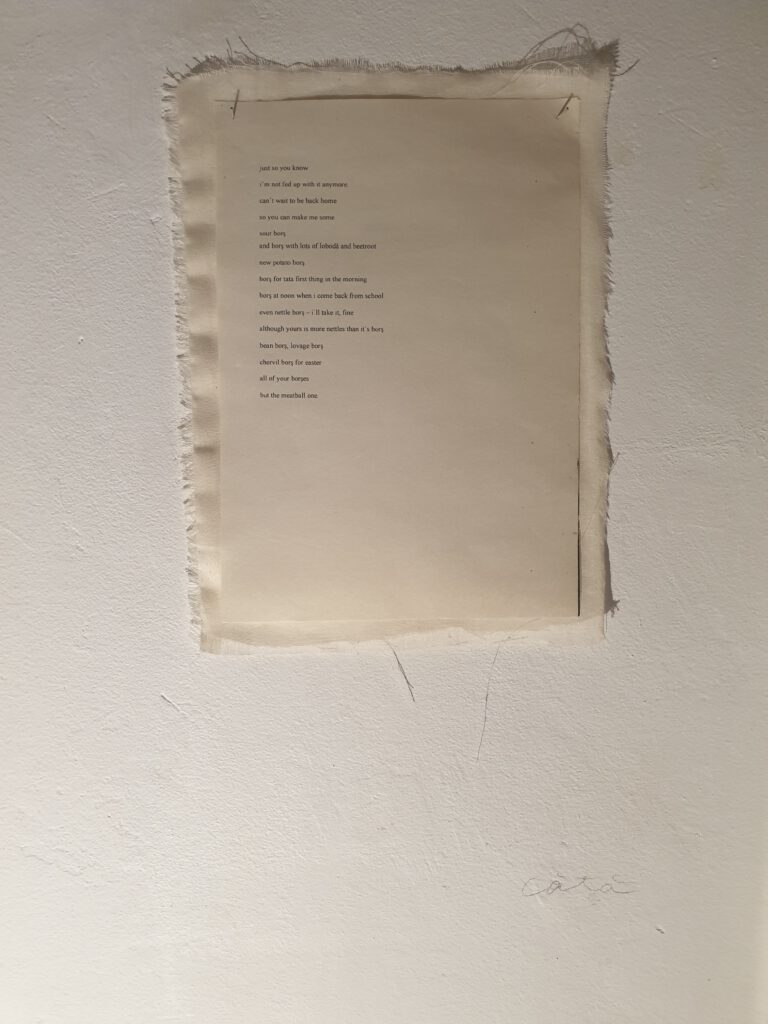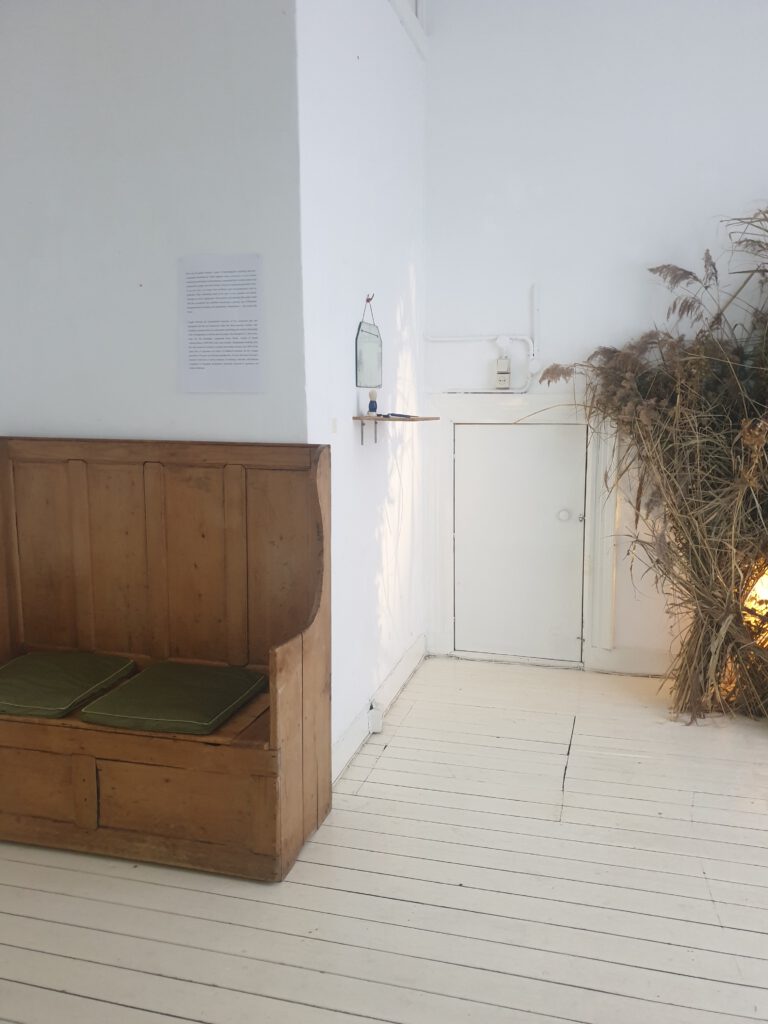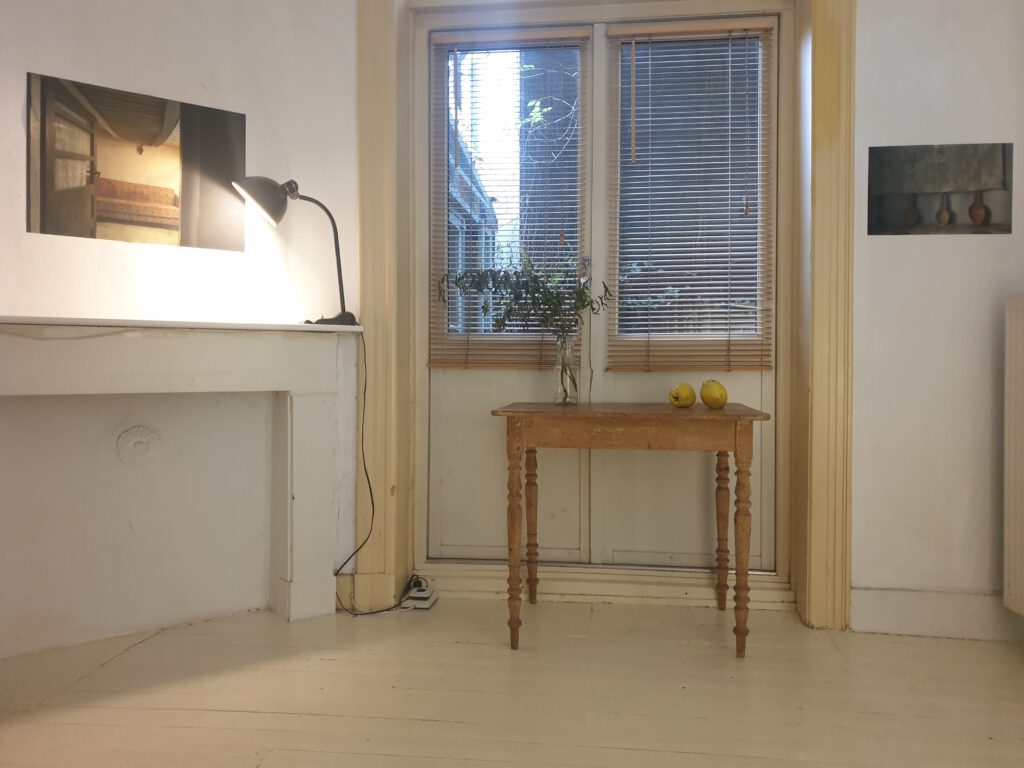





by Claudia Partac
How can the gallery become a space of intersubjective mourning and post-communist remembrance? What happens when postmemory in place occurs outside the usual locales of remembrance, transmuted into a western context and embodied by people who don’t belong to the post-communist generation? How to care for who is no longer there mobilises grief and postmemory work as malleable, fluid, continuing bonds to the past, at once personal and shared. Through an active engagement with practices and materials that render death and time perceptible, the exhibition reconstructs a primary site of Romanian intergenerational formation and postmemory transmission – the countryside home.
Caught between the sociopolitical structures of the communist past and absorption into the new democratic order, the home preserves artefacts with symbolic resonance that act as connectors, articulating not only the relationship with a disappearing world but also the people who belonged to it. More often than not, the Romanian countryside home bleeds wounds of forced collectivisation (1949-1962) and, more recently, displacement resulting from the mass exodus of workers to western and northern Europe after 1989. At the same time, it represents the kernel of childhood memories for the younger generation who grew up with their grandparents. As such, the home is not just a physical locale but a moving amalgam of meanings, materials, and histories congealed in changing attachments, repeatedly reopened to questions and critical reflection.